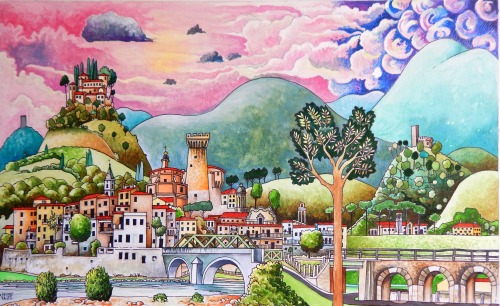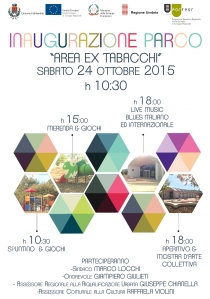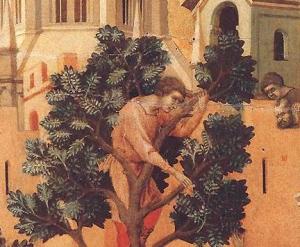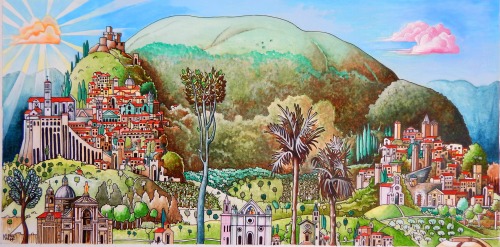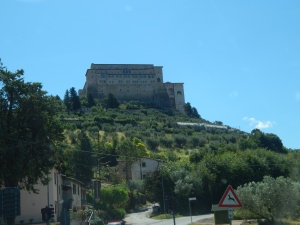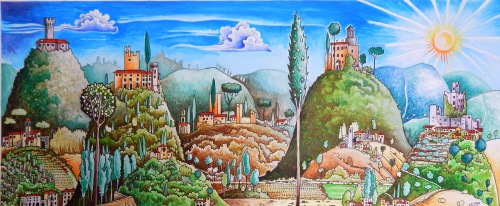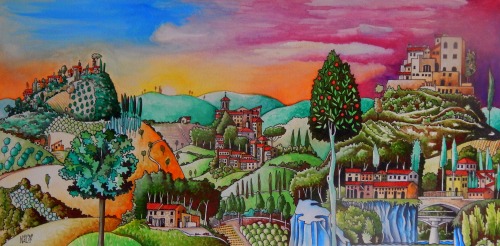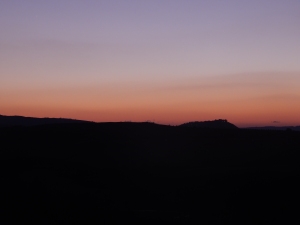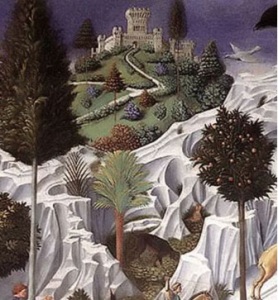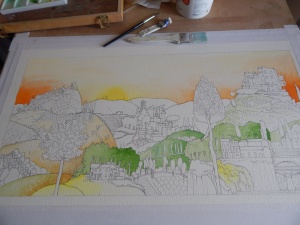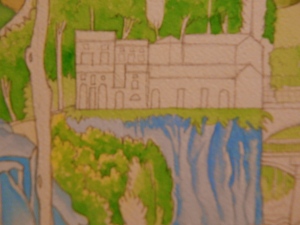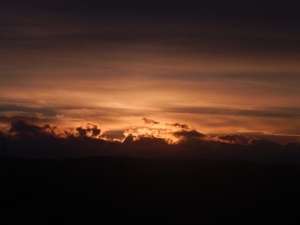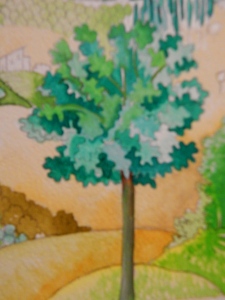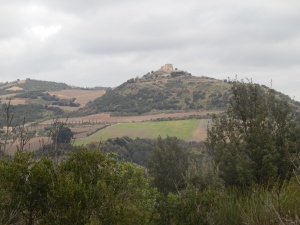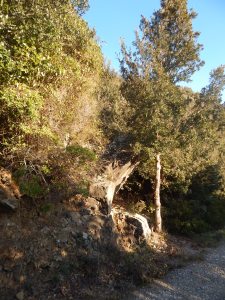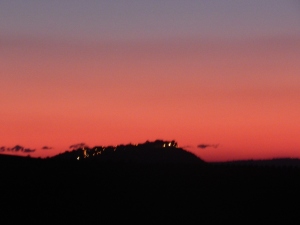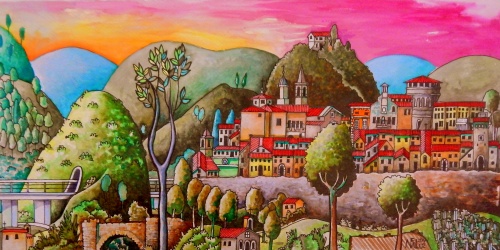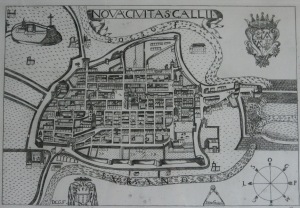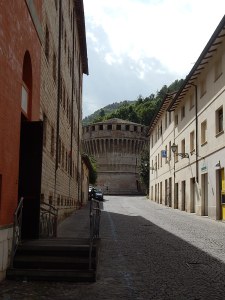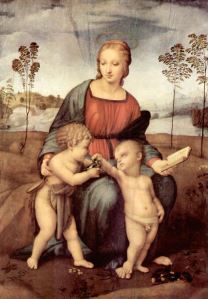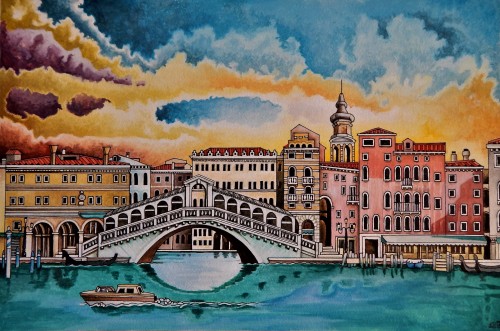
Ponte Rialto, Venezia – watercolour & ink. 60cm x 40cm (For Sale)
Painting in Venice
The next set of paintings sees a trip to northern Italy, to the watery city of Venice. This is a wonderful city full of magic and wonder. There are no cars on the islands and all transport is done on either the vaporetti and gondolas or you can take a traghetto across the Grand Canal and of course you can travel along the canals by foot.
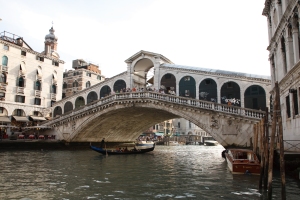
Rialto Bridge, Venice
The first painting, in the set, is the famous Ponte Rialto, which has stood since 1591. A popular attraction with visitors it spans the 48 metres of the Grand Canal and has shops built into the bridge. One of only four such bridges in the world today.
Watercolor on the Grand Canal
This picture uses three different view points, from the centre of the Grand Canal, looking directly at the bridge, and on either bank to achieve the flat perspective. The feeling of depth is created by over lapping the buildings and piers as well as diminishing object size with difference.
The painting makes use of aerial perspective and dark shadow to give added depth. The idea is to show how a completely flat painting can still exhibit three dimensions and create a visual puzzle for the viewer.
Prints, postcards and mugs are available to buy from my on-line shop.

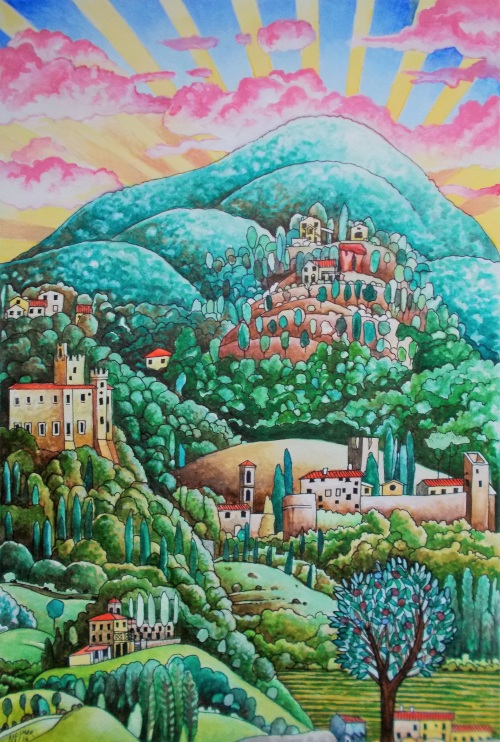

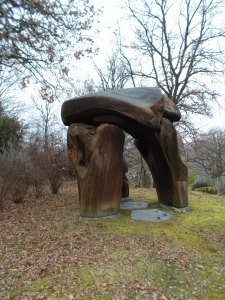

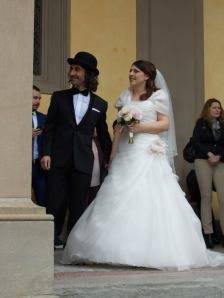 So we’d decided on the town and just needed the layout. This time I decided to paint Castello’s south wall, which features the impressive gateway, the Pinocoteca decorated by Versari and a half-hidden view of the bell tower and duomo.
So we’d decided on the town and just needed the layout. This time I decided to paint Castello’s south wall, which features the impressive gateway, the Pinocoteca decorated by Versari and a half-hidden view of the bell tower and duomo.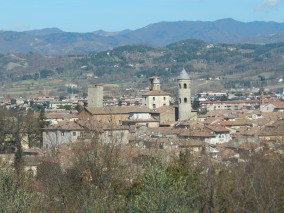 Citta di Castello is flanked by hills with the outstanding Belvedere sanctuary on one side and the former Montessori, educational institute, Montesca on the other. The scene is completed with the bell towers that grace the skyline and the modern roundabout on the left.
Citta di Castello is flanked by hills with the outstanding Belvedere sanctuary on one side and the former Montessori, educational institute, Montesca on the other. The scene is completed with the bell towers that grace the skyline and the modern roundabout on the left.